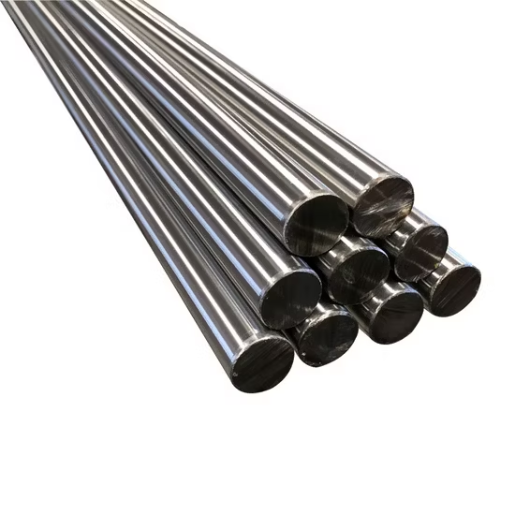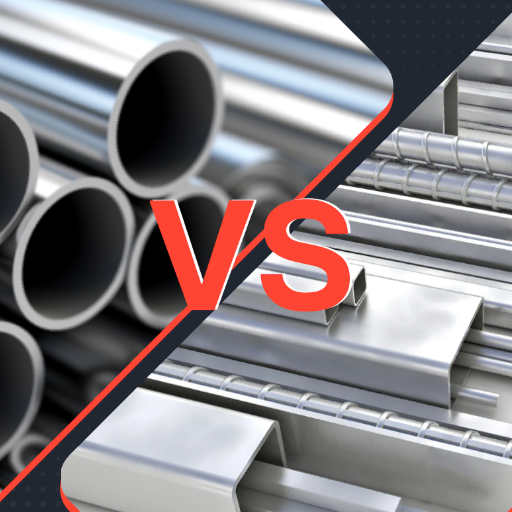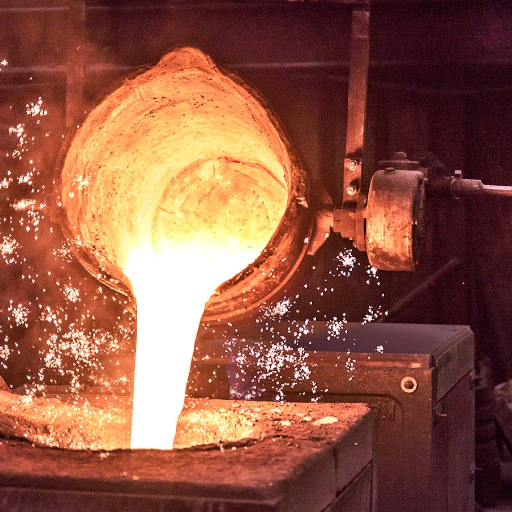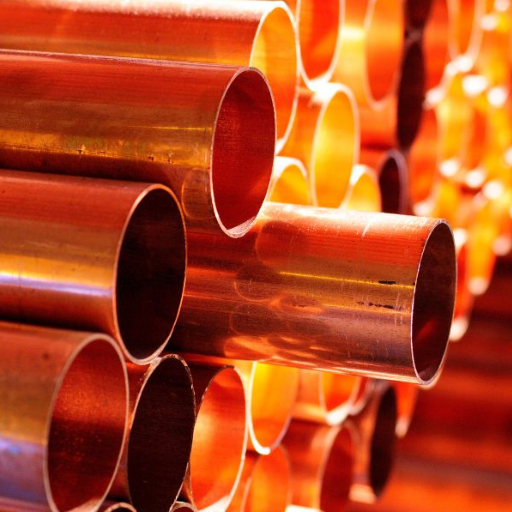The topic of safety and practicality of microwaving stainless steel has arisen on various occasions. Even with the invention of the microwave which greatly enhanced the ease in cooking or reheating meals, not every material can work with a microwave. This article seeks to answer the question of whether stainless steel can fit this description and can indeed be put in microwaves and what are the dangers if so. We will delve into the physics of microwaves and stainless steel, assess the primary dangers, and specifically outline conditions under which stainless steel is deemed safe to use in microwaves. Furthermore, we will explain how to select stainless steel with microwave safety certifications and provide recommendations on risk reduction when using metal utensils. This article will arm you with the logical rationale about the relationship between stainless steel and microwaves by conveying technical concepts in simple english.
Can You Use Stainless Steel in the Microwave?

In brief, no, the stainless steel is not generally microwave-safe due to its reflection and conduction of electricity. The microwave radiation will cause sparking in any stainless steel portion and container that may damage the appliance and pose a fire risk. However, there are some cases where stainless steel parts or containers explicitly labeled microwave safe may be used. Such products undergo particular testing aimed at risk mitigation, but their application is still restricted to rigid criteria, like no contact with the walls of the microwave, no sharp ridges, or complicated designs. Always refer to the guidelines provided by the manufacturer regarding the use of microwave steel.
What Happens When You Put Stainless Steel in the Microwave?
Microwaving food in cookwares made from stainless steel is not recommended because stainless steel stainless steel reflects microwave electromagnetic radiation unlike metals which absorb waves, hence preventing the food from heating. The device may end up microwaving the food unsuccessfully, leading to heating unevenly. Furthermore, if the stainless steel is made of very thin layers or possesses sharp edges, the structured geometric electric field may lead to generation of sparks and/or fires. Regardless of these dangers, some cookwares made from stainless steel are made specifically to withstand microwaving- but putting these devices carelessly dare posses risks for the user and the microwave. It is prudent to follow suggested guidelines by the letter when microwaving stainless steel.
Why Are Some Stainless Steel Containers Microwave-Safe?
Some stainless steel containers are microwave-safe due to their design, materials, and structural properties. These containers are either made with thin walls or have smooth, rounded edges to reduce the risk of creating concentrated electric fields which could lead to arcing or sparks. Also, microwave safe stainless steel is designed so that microwaves reflecting off its surface or those passing through do not substantially interfere with the heating process. As noted in their instruction manuals, failure to follow the manufacturer’s instructions will undermine the safety of the appliance and can lead to improper use damages. The container’s size, shape, and location to microwave parts also determine the level of suitability for microwave application.
What Are the Risks of Using Stainless Steel in a Microwave Oven?
The use of stainless steel as an oven microwave container creates multiple challenges as it interacts with steel due to the metal’s temperature reflective nature. Each stainless steel oscillation puts the microwave at risk of arcing coming from the potential leap of electricity over metal slots which is known to cause severe damage to the inter components of the incorporated microwave, The other risk is the potential of fire coming out of the microwave. Moreover, the blocking of microwave penetrating through the food or liquid is likely to cause incomplete heating called steel-oven syndrome. Apart from the greater body of stainless steel, even minute details such as trims and handles are also capable of causing an obstruction hence it is paramount to steer clear from stainless steel obstructions. In cases of doubt, always follow the guidance provided by the box.
What Makes a Stainless Steel Container Microwave-Safe?

An assessment of whether a stainless steel container is microwave safe requires certain design and material features. Stainless steel containers safe for use in microwaves are generally made with extremely thin walls to reduce the reflection and scattering of the microwaves. This further prevents the concentration of energy that drives the creation of damaging sparks. Recipients should also check if the manufacturer’s mark is present, as this proves the container was verified for use within microwave radiation. Unfortunately, these ergonomic features do not suggest microwave-safe containers perform comparably to glass, ceramic, or other non stainless steel materials, as the former still causes uneven heating. Follow all manufacturers instructions to avoid misuse.
Understanding Microwave-Safe Stainless Steel Standards
Assessing whether stainless steel can safely be used in microwaves requires additional criteria and is guided by certain standards and protocols. First, the unit must not contain any sharp edges or defects which may lead to arcing or concentrated heat that may scars the microwave. Also, stainless steel products approved for microwaves tend to have thin walls which prevents the microwave’s electromagnetic fields from being disrupted, or worse, causing overheating. Moreover, such products usually undergo extensive manufacturer testing to comply with international safety and usability regulations like ASTM or similar standards. As noted, check individual product documents or consult manufacturers for instructions, as improper usage of stainless steel in microwaves may pose risks to functionality and safety.
How to Identify Microwave-Safe Stainless Steel Food Containers
1. Examine the Manufacturer’s Label: Look for markings of ‘microwave safe” or “microwaveable” on the product. These markings are either on the label or product specifications document enclosed with the item. A manufacturer will always state these details on either the package or the product documentation provided.
2. Take a Look at the User Manual: Check the producer’s guide or product manual which usually stipulates whether the particular stainless steel container is microwaveable or not. This document carries the most information regarding the subject in question.
3. Check the Certifications: Look for the certifications which include compliance with ASTM and other internationally accepted certifications that prove that the product has been tested and approved for safety in microwave use.
4. Conduct the Safety Test Carefully: The microwave may be tested for use by placing it in a container full of water. The microwave should be set to a low power one minute setting. If the container is cool when the water warms up, it can be assumed that the microwave is safe. Caution is necessary since failure to follow the right procedures may cause danger.
5. Assess the Design and Materials: The non-metal covered or microwaveable lids auger well for the possibility of the stainless steel containers having some microwave capabilities. Always ensure that the container does not have thin coatings of metal which pose a risk of sparking.
These instructions in conjunction with the respective documents are sufficient to guarantee that the microwave usage of the stainless steel vessels is done safely and effectively.
Are All Types of Stainless Steel Safe to Use?
Not all types of stainless steel are universally safe for microwave use. Most stainless steel containers are not made for microwave use because of the risk of sparking due to metal and microwaves interacting. A few, however, and tailored for selective microwave exposure. The thickness, shape, and surface finish of the steel are crucial. Smooth or thin surfaces and items with decorative metal surfaces are much more problematic. As a matter of precaution, check the guidelines provided by the manufacturers of the oven and do not use any stainless steel device that is not expressly declared as microwaveable.
How to Properly Use Stainless Steel in a Microwave?

- Look for the Stains Steel microwave-safe designation. Use only those items which are labeled as microwave safe by the manufacturer. This guarantees that the item has been tested for compatibility microwave use.
- Prevent sharp or thin edges: Smooth thick designs are safer so avoid those marked sharp edge or decorative metallic coatings which can cause arcing.
- Avoid close proximity to the walls of the microwave to avoid contact with other metallic parts.
- Some microwave safe stainless steel containers can be used but are not recommended for cooking. They can be used for reheating but not for raw ingredients.
- Always check the user’s manual for instructions pertaining to using metallic devices such as stainless steel in the microwave.
Best Practices for Heating Stainless Steel in a Microwave Oven
Due to the dangers that metallic materials reflecting microwaves pose on the appliance’s safety and causing uneven heating, it is not recommended to place stainless steel in microwave ovens. However, in some cases, it may be allowed:
- Use Certified Microwave-Safe Containers: The container should be explicitly labeled as stainless steel microwave container. Stainless steel microwave containers are expensive and demanding to manufacture hence need checking for labeling prior to use.
- Avoid Prolonged Heating: Utilizing a microwave-ready stainless steel container should take place on the condition that the container is heated on a sporadic basis to reduce the chances of overheating.
- Follow Manufacturer Guidelines: For all lots where microwave-proof stainless steel vessels are utilized, try to make session intervals as brief as possible to further mitigate the chances overheating occurs.
- Check for Insulated Designs: Some stainless steel covered with specialized coatings or insulation are best suited for reheating food because they are designed to reduce the exposure to microwave radiation.
- Do Not Heat Raw Ingredients: Reheating is acceptable when done in approved containers, but cooking raw ingredients poses the risk of unsafe, nonexistent, or unregulated heating.
The microwave may pose a risk to stainless steel containers under strict controlled conditions – however, within the framework of defined procedures and stainless steel container requirements, this risk can be mitigated.
What Foods Can You Reheat in Stainless Steel?
A critical step in avoiding overheating a stainless steel container is to constantly monitor the reheating of its contents so only evenly cooked items that do not splatter or scorch are used. Soups, stews, and even sauces are excellent options due to their moisture content which helps with heat distribution, in addition to pre-cooked rice, pasta, and stir-fried vegetables that heat well in microwaveable stainless steel containers. Other options should be excluded unless under-sighted, as they contain solid or dry pieces which may become overcooked due to uneven heating. Equipment such as the stainless steel container should always follow stated guidelines to eliminate the chance of overheating and damage.
Alternatives to Stainless Steel for Microwave Food Storage

When looking for substitutes dealing with stainless steel microwave food storage, the following materials can serve useful and safe purposes:
- Glass Containers: Glass, and high resistance glass like borosilicate is highly durable since it ensures uniform heating. As glass does not leach, it makes the container safe to use for storing, reheating and microwaving food as it is non toxic and safe.
- Ceramic Dishes: Microwave-specialized dishes made from ceramic grade-A undergo zero plastic deformation when heated and disperse heat evenly.
- Silicone Containers: Food grade silicone is flexible and durable and adheres to muting standards for heat and cold, thus making it ideal for reheating. Microwavable containers made from silicone tend to be lightweight and come in varying shapes and sizes.
- Microwave-Safe Plastic: Containers made from plastic pose a potential risk, therefore, safeguarded from containing BPA. Such materials are designated as safe for use in microwaves however, should not be exposed to great amounts of heat for long periods.
Every option has distinct benefits based on the food type being stored, heated, or cooked, along with the precise requirements for use. With every device, always check the manufacturer’s instructions for compatibility with microwave use.
What Are Safe Materials for Microwave Use?
Glass, ceramic, and specified plastics labeled microwave-safe are the only materials considered safe for use in microwaves. Glass and ceramics are chemically stable at high temperatures and do not leach glassy mass into any food, hence making them very durable and heat resistant. Microwaveable BPA-free plastics can also be used but should not be exposed to harsh or extended temperatures as it may compromise their structure. Other unsuitable materials include metals and microwavable-safe plastics which have metal accents since these materials can produce sparks which are dangerous. Following instructions provided by the manufacturer’s guidelines guarantees safety and efficiency while checking for the microwave-safe symbol adds an additional method of ensuring that the container is safe for microwaves.
Advantages of Using Microwave-Safe Containers
The use of microwave-safe containers enables the avoidance of many functions oriented hazards such as safety risks enhancing health. Initially, these containers do not warpgate, melt, or downgrade in structure during usage aiding safety while protecting users from BPA and phthalate chemical releases during heating alongside preserving food prolonging health risks. These containers also support even distribution of heat hence improving efficiency during cooking while preventing cold spots in food. Most importantly, these containers protect the microwave alongside the container from safety risks such as sparking and cracking while enhancing the longevity of both. Lastly, adhering to microwave-safety standards helps prevent overheating issues.
Can You Use Stainless Steel Lunch Boxes in the Microwave?

Stainless steel lunch boxes are not to be heated in the microwave, and for good reason. Stainless steel lunch boxes will not be exposed to overheating, but will be exposed to damage. The damage occurs because stainless steel reflects microwave radiation instead of absorbing it, which can cause a range of hazards including sparking and fire. Moreover, food will not heat without properly being heated within the microwave and so it is banned for that reason as well. The best items which can be used in the microwave without causing hazards best suited for stainless steel items are certain plastics or glass which provide proper heating efficiency.
Are There Microwave-Safe Stainless Steel Lunch Boxes?
As mentioned previously, while steel is not microwave safe stainless lunch boxes along with other devices may bear a distinct design which permits microwaving. Features include glass and silicone compartments or detachable microwaveable inserts, which allow features close to full use of the microwave without putting the whole device in it. As always be cautious for suggestions placed or marked by the users as those serve for correct outline on how to utilize it properly.
Tips for Using Lunch Boxes in a Microwave Oven
- Check the Material Composition
Check if your lunch box is marked microwave safe before using it. Glass, ceramic and BPA free plastic containers are safe while those that contain metal parts like stainless steel shouldn’t be microwaved unless they are specifically made with microwave safe materials.
- Avoid Tight Lids
When microwaving, ensure the lid is loose or vented, so steam may escape. Without this, pressure will build and either damage the container or spill food.
- Use Microwave-Safe Inserts
For stainless steel lunch boxes, use any microwave safe plastic, silicone or glass inserts that are provided by the manufacturer. These are used to heat food without exposing non microwave safe materials.
- Adhere to Manufacturer Guidelines
Do not forget to read instructions on the lunch box. These instructions usually state if the container, or parts of it, are safe for microwaving.
- Be Cautious of Food with Low Water Content
Low water-containing foods such as dry bread can inflict harm on the microwave over time. A lunch box should be heated evenly and at short intervals.
Following these practices allow for great versatility when handling the microwave. It ensures easier usage and care of the lunch box while making sure the food is heated safely and properly.
References
Frequently Asked Questions (FAQ)
Q: Is it safe to use stainless steel in a microwave?
A: While stainless steel is not prohibited from being used in a microwave, containers made of stainless steel can cause problems when used in microwave ovens due to electrical arcs.
Q: What types of stainless steel are considered safe for microwaves?
A: Containers that are made of 304 stainless steel are generally safer for use in microwave ovens, but it’s important to check if they are specifically labeled as microwave safe.
Q: What does the British Stainless Steel Association say about microwave use?
A: The British Stainless Steel Association advises that while high-quality stainless steel can be used in microwaves, caution should be taken to avoid direct contact with microwave oven walls to prevent arcs.
Q: Are there specific food containers that are microwave safe?
A: Yes, you can find microwave-safe stainless steel food containers in a variety of shapes and sizes, often labeled clearly for microwave use.
Q: How can I tell if my stainless steel container is safe for microwave use?
A: Look for labels or markings indicating that the container is microwave safe. If it is not labeled, it’s best to assume it is not safe for use in a microwave.
Q: Can I heat food in a stainless steel container in the microwave?
A: It’s generally advised to avoid heating food in a stainless steel container in a microwave, as it can lead to issues such as arcing and uneven heating.
Q: What alternative materials can I use in the microwave instead of stainless steel?
A: Alternatives to stainless steel include glass, ceramic, and certain plastics that are labeled as microwave safe, which are easier to find and widely used in microwave ovens.
Q: Why is it essential to use microwave-safe containers?
A: Using microwave-safe containers is essential to prevent accidents such as fire, melting, or chemical leaching into food, which can occur with materials not designed for microwave use.







